|
Types of Coral Reefs
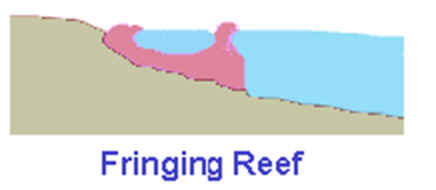
Fringing reefs are coral
reefs that grow in shallow waters and border the coast closely or are separated
from it by a narrow stretch of water. Fringing reefs consist of several zones
that are characterized by their depth, the structure of the reef, and its plant
and animal communities.
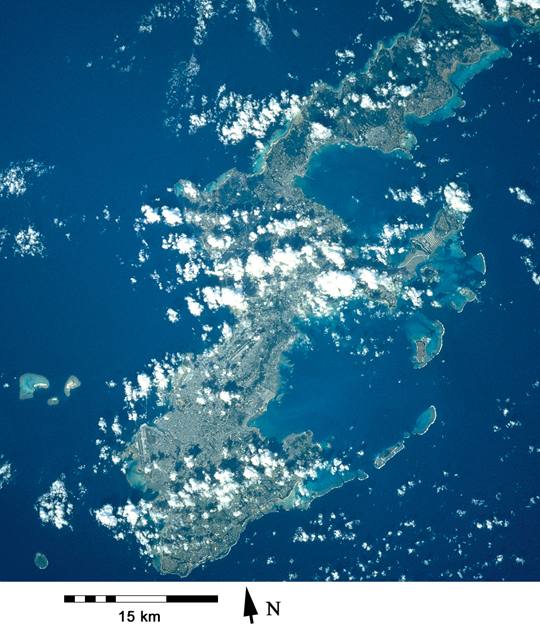
Fringing reefs around Okinawa
Credit:NASA
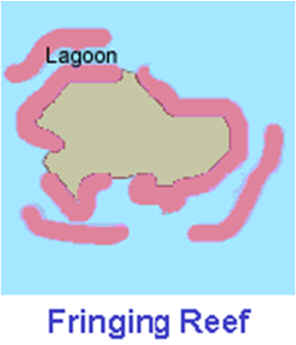
These regions include the reef crest (the part of the reef the waves break
over), the fore reef (the region of medium energy), and the spur and groove or
buttress zone (the region of coral growth which includes rows of corals with
sandy canyons or passages between each row).
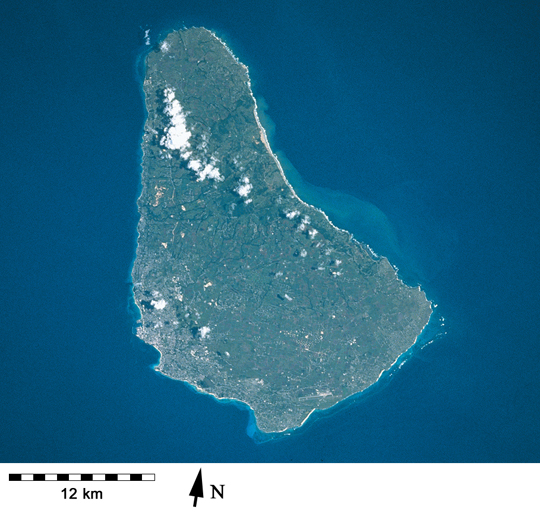
Fringing
reefs around Barbados have declined over many decades although there are still
submerged reefs off the west and southern coasts [STS051-72-95, 1993]
Apron reef – short reef resembling
a fringing reef, but more sloped; extending out and downward from a point or
peninsular shore
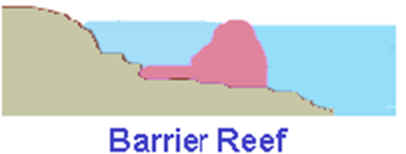
Barrier reefs are
reefs that are separated from land by a lagoon. These reefs grow parallel to the
coast and are large and continuous. Barrier reefs also include regions of coral
formation that include the zones found in fringing reefs along with patch reefs
(small reefs), back reefs (the shoreward side of the reef), as well as bank
reefs (reefs that occur on deep bottom irregularities).
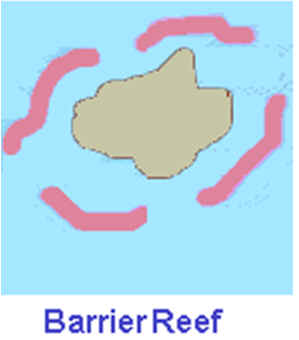
Barrier reefs also include
reef flats (the are of the reef not exposed), the reef crest, which runs
parallel to the coast and is protected from waves, and a coral terrace (a slope
of sand with isolated coral peaks). These features are followed by another coral
terrace and a vertical drop into deeper waters.
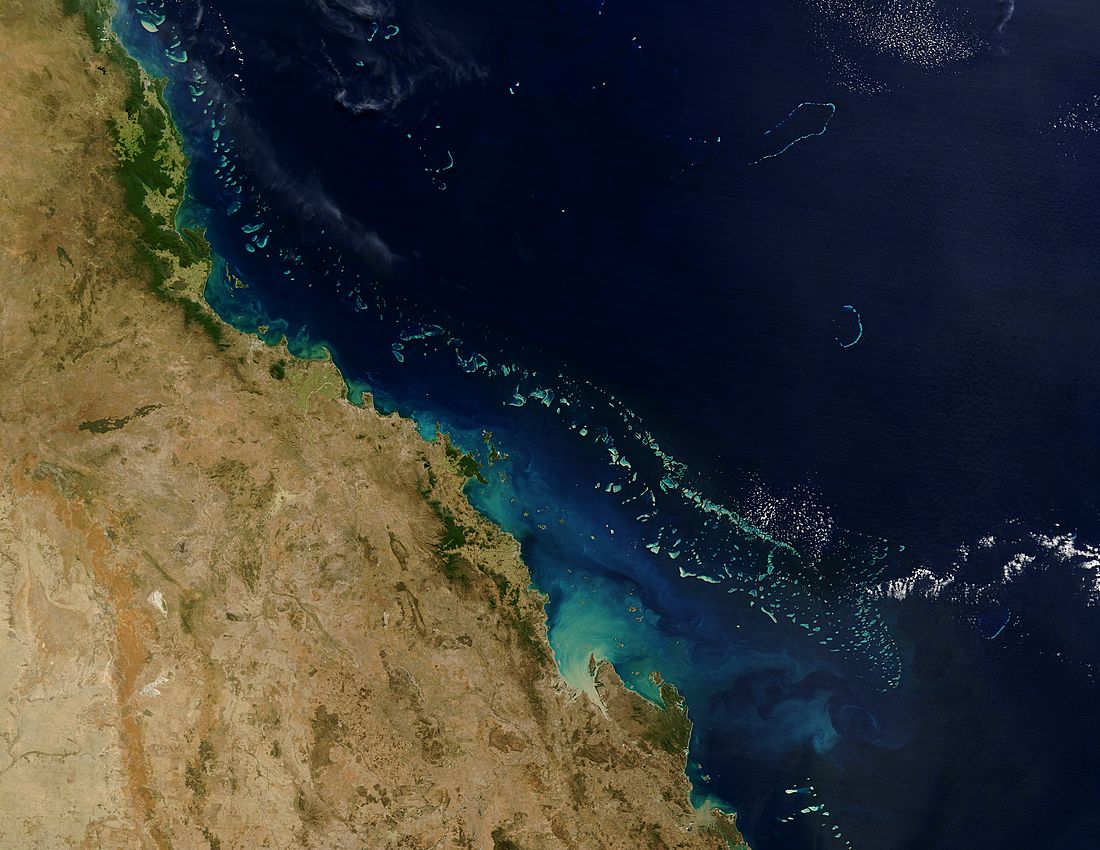
Australia’s The Great Barrier Reef arches over 2000 kilometers along the
northeast coast of Australia.
Credit:NASA
Patch reef – an isolated, often circular reef, usually within a lagoon or
embayment
- Located in shallow water
10-20' (3-6 m)
- Outer edge ringed by sand
- Dominated by large star and
brain coral colonies
Ribbon reef – long, narrow, somewhat winding reef, usually associated with
an atoll lagoon
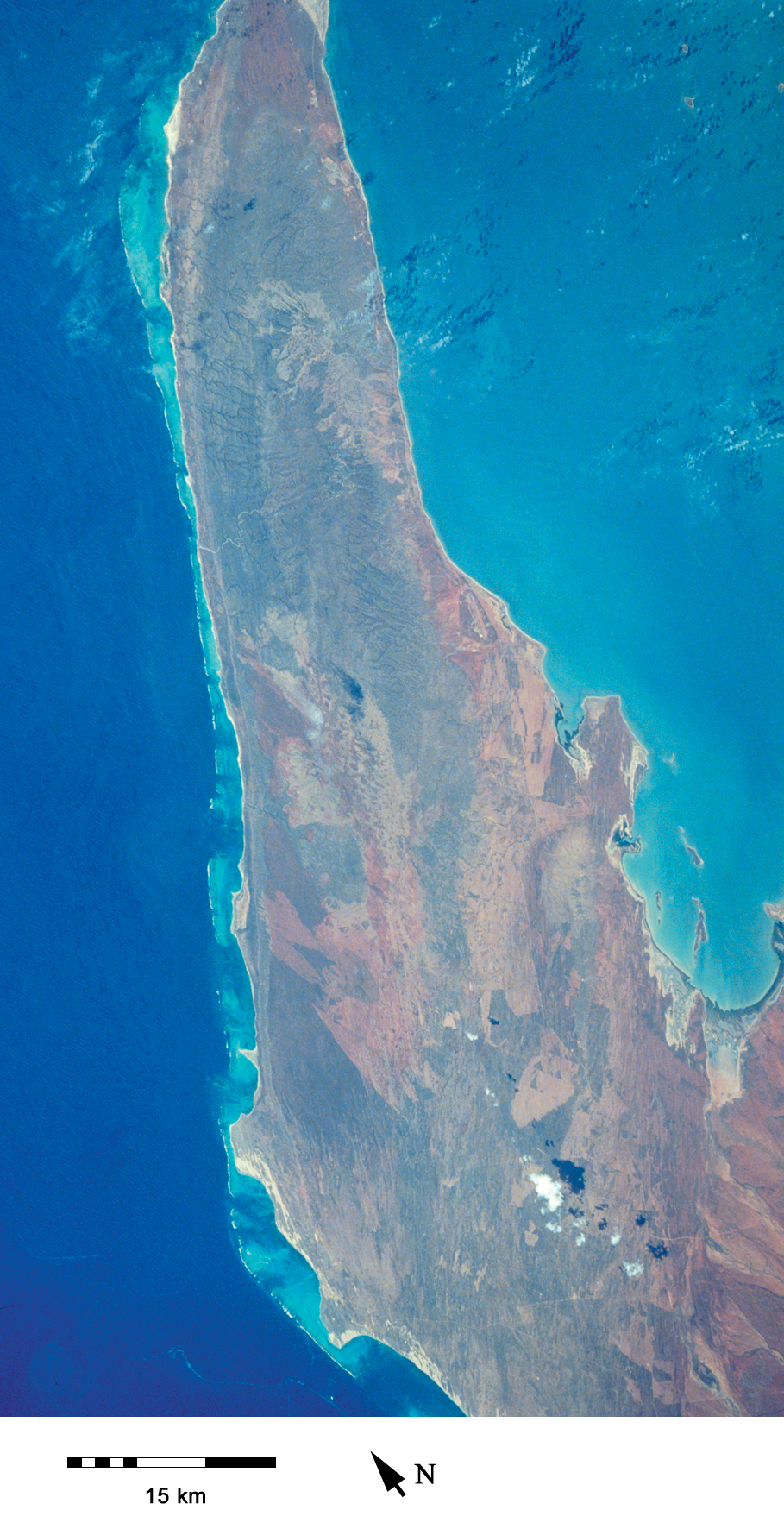
The North West Cape is bordered by Australia's longest fringing reef, the
Ningaloo Reef
Credit:NASA
Table reef – isolated reef, approaching an atoll type, but without a lagoon

Credit:
New England Aquarium
Bank Reef – Bank reefs are larger than patch reefs and are linear or
semi-circular in outline
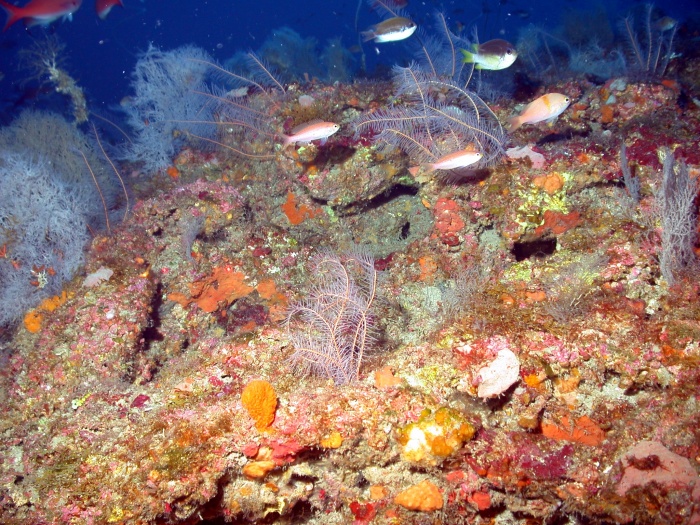
Bank Reef Scene
credit: NOAA
- Located seaward from patch
reefs
- High species diversity
- Characterized by spur and
groove formation
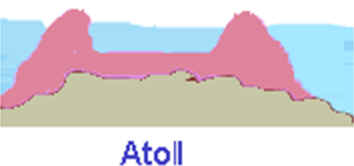
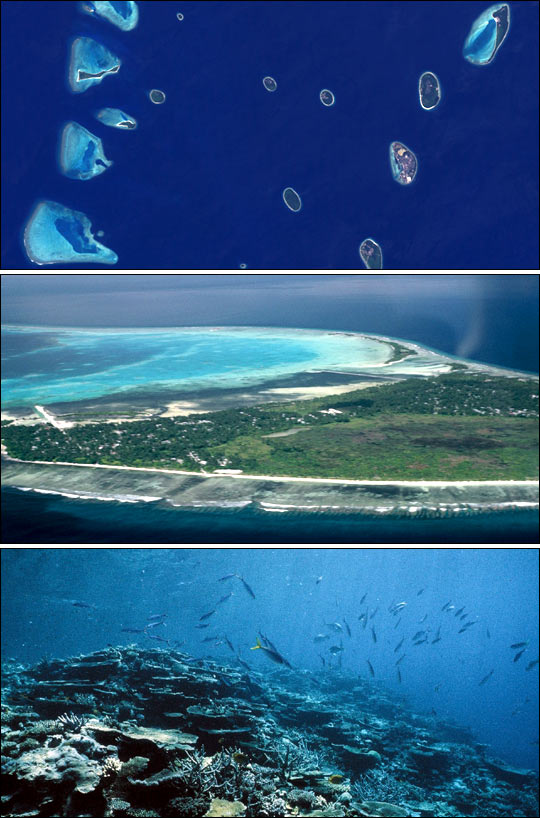
Atolls in The Maldives Credit: NASA
Atolls are annular reefs
that develop at or near the surface of the sea when islands that are surrounded
by reefs subside.
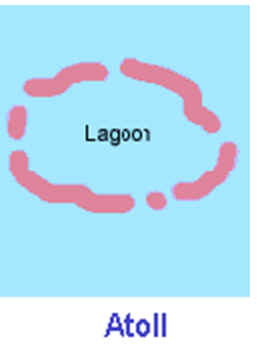
Atolls separate a central
lagoon and are circular or sub-circular. There are two types of atolls: deep sea
atolls that rise from deep sea and those found on the continental shelf.
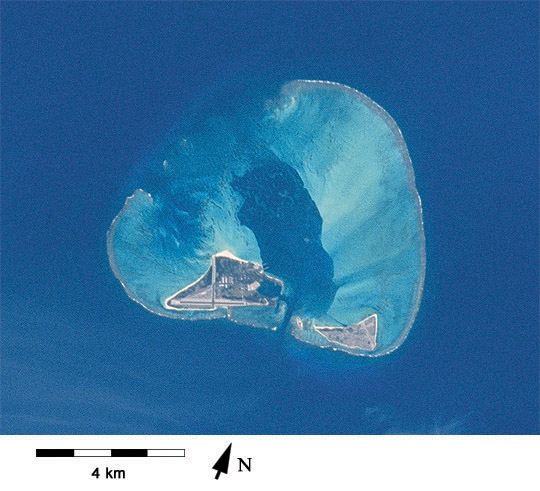
View of Midway Atoll from Space Shuttle





Reef Relief founders
Craig and DeeVon Quirolo retired from the grassroots organization last July,
only to begin an effort to provide an online resource on coral reefs. Their new
website provides all the award-winning educational tools, grassroots strategies,
project reports and images of coral reefs assembled during their work over the
past 23 years in the Florida Keys and throughout the Caribbean protecting coral
reefs. You can find it at
www.reefrelieffounders.com

credit: NOAA, NASA, Reef Check, UNEP, Reef Relief, Australian Government
|

